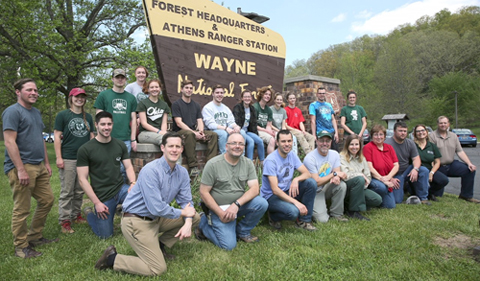
2018 Interns, OHIO Faculty, and Wayne National Forest staff.
by Kristin Distel
Ten Ohio University students from Anthropology, Environmental & Plant Biology, and Biological Sciences interned with the Wayne National Forest in summer 2018, marking trails, searching for rare species and habitats, and helping the forest staff prepare for upcoming projects.
The partnership between Ohio University’s College of Arts & Sciences and the Wayne National Forest, began in 2017.
The majority of the interns’ time was spent assisting with two Wayne National Forest initiatives—the Baileys Trail System, which focuses on the creation of a mountain bike trail system, and the Long Ridge SE Project, which will promote the area’s oak forests through prescribed burns and timber stand improvements. Through non-invasive means, especially visual surveying, the interns searched for species and habitats that might be affected by the implementation of these projects.
Athens District Ranger Jason Reed clarifies the importance of these surveys.
“First and foremost, we look for threatened and endangered plants and animals that are listed under the Endangered Species Act. Additionally, we search for what are known as regional forester sensitive species (RFSS). These are plants and animals that are regionally uncommon or require specific habitat but are not protected by the Endangered Species Act,” Reed notes.
“The students did not find any threatened or endangered species or any of our RFSS within the proposed project areas,” he emphasizes.
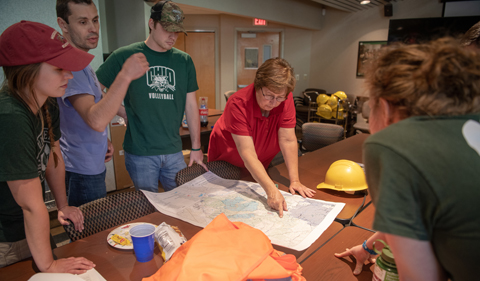
OHIO Associate Professor Dr. Viorel Popescu (blue shirt) and Lynda Andrews (red shirt) help train and coordinate Conservation Ecology Lab students working on research at the Wayne National Forest headquarters. Photo by Ben Siegel
OHIO Faculty and Returning Students Guide New Interns
OHIO faculty including Dr. Harvey Ballard and Dr. Viorel Popescu, who were each involved in the internship program last year, continued to partner with the Wayne National Forest for the summer 2018 program. Additionally, three returning students, Zach Matthews, Harlan Svoboda, and Julia Golias, served as trainers.
“The trainer position allows returning students to bring their wealth of experience to the new interns and help them be successful,” says Lisa Cohen, Director of External Relations for the College of Arts & Sciences. The trainers provided job shadow assistance in multiple areas, including help with reporting the interns’ findings at the end of the summer.
Surveying the Area’s Anthropological History
The Anthropology intern team included OHIO students Brenna Tippie and Ben Johnson. The team focused on surveying; in lieu of digging, they visually located and analyzed historic properties.
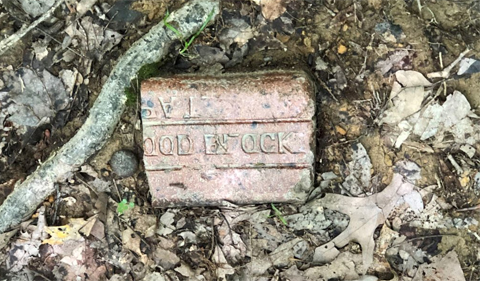
Portion of a brick found in the Wayne National Forest
Tippie’s and Johnson’s search of the Wayne National Forest land yielded a variety of interesting objects—windowpane glass, Hallwood blocks from the Nelsonville area, pottery, and Mingo bricks from West Virginia. They also located the sites of homes, including a two-story house made of bricks and cut sandstone. The team additionally identified a large hole on the site, which may indicate the presence of a cellar.
Interim Dean Dr. Joseph Shields asked Tippie about the possible date of the bricks and other materials, as well as the estimated dates and ownership provenance of the house sites. Though the identity of previous owners is unclear, Tippie explained that some of the bricks that the team located date back to the early 1800s.
The Anthropology interns also located a remote, deeply hidden cemetery dating from the 19th century, where descendants of the buried still place flowers.
“Some stones have dates but no names, but each family knows which markers belong to their relatives,” Tippie explains. The anthropology team’s findings have further provided historical information about the area’s rich history.
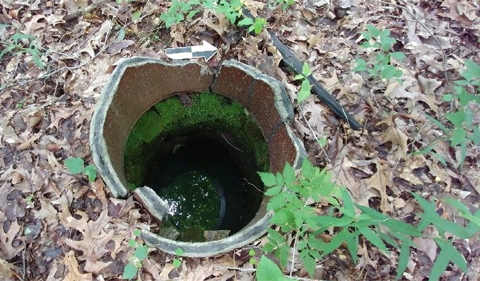
Part of a house site in the Wayne National Forest
“This internship was a really great experience,” Tippie said. She also completed internship work last winter and, before that, she completed OHIO Field School of Archaeology. “I looked at maps I’ve never seen before, including many coal mining sites. Seeing all the history we have around here was incredible. I’ve always wanted to work in a forest and be out in the field,” she adds.
Tippie’s major is Anthropology, and she is minoring in Environmental Plant Biology. “I may also want to study Forest Ecology and earn a GIS certificate because of this internship,” she adds.
Environmental Plant Biology Interns Prepare Area for Prescribed Burn
Interns Charlie Murrell, Shelby Kihm, Emily Uhlman, and John Knavish, who study Environmental Plant Biology at OHIO, surveyed a 50-foot corridor on either side of a 30-plus mile span of the Wayne National Forest, where they searched for regional forester sensitive species. Their work was integral to preparations for the prescribed burn, which is intended to help regenerate oak stands and create more open conditions under the forest canopy to support plant species that need more light.
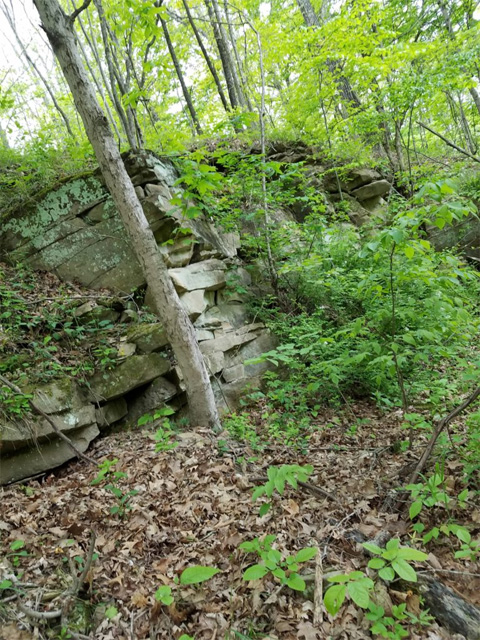
Jason Reed explains the problematic nature of the dwindling oak and hickory populations.
“The absence of oak and hickory in the understory is very apparent throughout southeast Ohio’s forests. What we have found in the areas that have been treated with prescribed fire is that oak and hickory seedlings are present in the understory, along with a much different herbaceous plant community. The overall objectives of these treatments, including those that have taken place over the past 15 years, are to help promote these species, and we’ve done just that,” he remarks.
The interns had a great opportunity to observe a species that was once thought to be sparse but has flourished in recent years. As an added experience, they were able to assist in an annual count for running buffalo clover, a plant species listed as endangered under the Endangered Species Act.
They counted individual rooted crowns of the plant at sites not associated with the Baileys Trail System or the Long Ridge SE projects. Survey efforts such as this have found more populations of running buffalo clover, which may assist in someday removing it from the endangered species list.
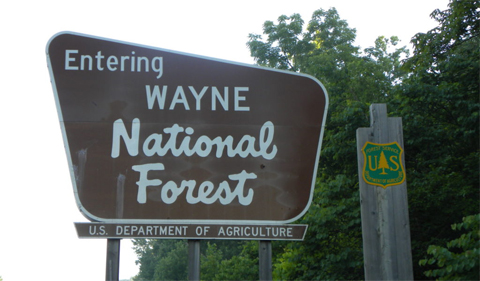
They also located “a substantial amount of ginseng,” which is not rare locally or endangered but is on a separate watch list. “Ginseng was formerly harvested very heavily, but it is now growing back impressively,” they explain.
- Read Emily Uhlman’s Forum blog post on Running Buffalo Clover.
- Read Shelby Kihm’s Forum blog post on pollination and John Knavish’s post, “About the Emerald Ash Borer.”
“My internship taught me a lot about forest dynamics,” Murrell states. “I’m very interested in the Forest Service, and this internship really made me want to work in a national forest.”
“The prescribed burn at the Upper Baileys is so interesting. It’s fascinating to learn how quickly a forest grows back after prescribed fires. We also learned a lot about land use history, including reclaimed mining land and old pastures. We also became more familiar with biological terminology while going through the forest, and my native plant knowledge increased ten-fold,” Murrell adds.

A Bobcat checks out one of our trail cameras. Photo Credit: Wayne National Forest
Kihm concurs, stating “I can identify so many more plants now! We were able to observe how specific species of plants have grown over the course of the internship. We actually saw how plants mature and flower.”
Murrell and Kihm hope to become further involved with the Wayne National Forest’s Long Ridge project and have taken classes in preparation for doing so. Reed clarifies that prescribed burns provide a series of benefits.
“Prescribed fire reduces competition from the shade-loving species, which allows other herbaceous and woody plants to re-establish in many areas. Due to the nature of our burns, fire creates a mosaic burn pattern. As such, the diversity of plants is increased across the area, providing an array of food sources and cover for many animal species,” Reed states.
Biological Sciences Interns Weigh in on Long Ridge SE Project
Nicole Dake, who studies Environmental Biology, and Tyler Stewart, a Wildlife Biology major, also interned at the Wayne National Forest this summer, devoting most of their time to the Long Ridge SE Project. In preparation for this prescribed burn, the team identified species of interest in the area to determine how the fire might affect them. Specifically, they conducted salamander surveys and bird point counts, in addition to surveying via camera traps and malaise traps (a method of capturing insects for inspection).
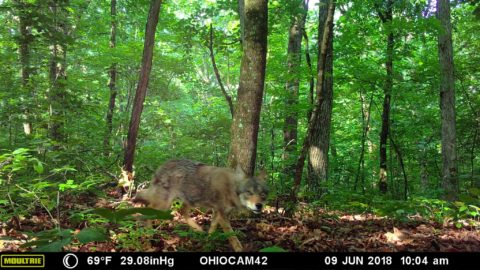
Coyote captured near the proposed bike trail. Photo Credit: Wayne National Forest
“The survey is a required part of the National Environmental Policy Act (NEPA)”, Reed explains.
Dake and Stewart conducted 10-meter by 50-meter surveys of rocks, logs, trunks, branches, and moss, in addition to 1-meter by 1-meter leaf litter searches, in which they cleared away, assessed, and replaced leaves. To facilitate their work, Dake created a remarkable interactive map featuring the exact coordinate points at which the team placed cameras and conducted surveys.
In conducting their bird point counts, Dake and Stewart were in the field daily by 5:15 a.m. to begin their work. Their goal was to look for species that would be affected by a low-burning fire. These include ground-nesting species, low-shrub-nesting species, ground-foraging species, and low-shrub-foraging species. The interns also assessed tree coverage.
The team’s camera trapping identified the presence of foxes, bobcats, coyotes, and deer, while their malaise traps and invertebrate traps, the latter of which were set at 10 locations, caught 628 insects. Dake and Stewart pinned and donated several of those insects to OHIO. Additionally, like Murrell, Kihm, Uhlman, and Knavish, the Biological Sciences interns were involved in the annual survey of existing running buffalo clover populations.
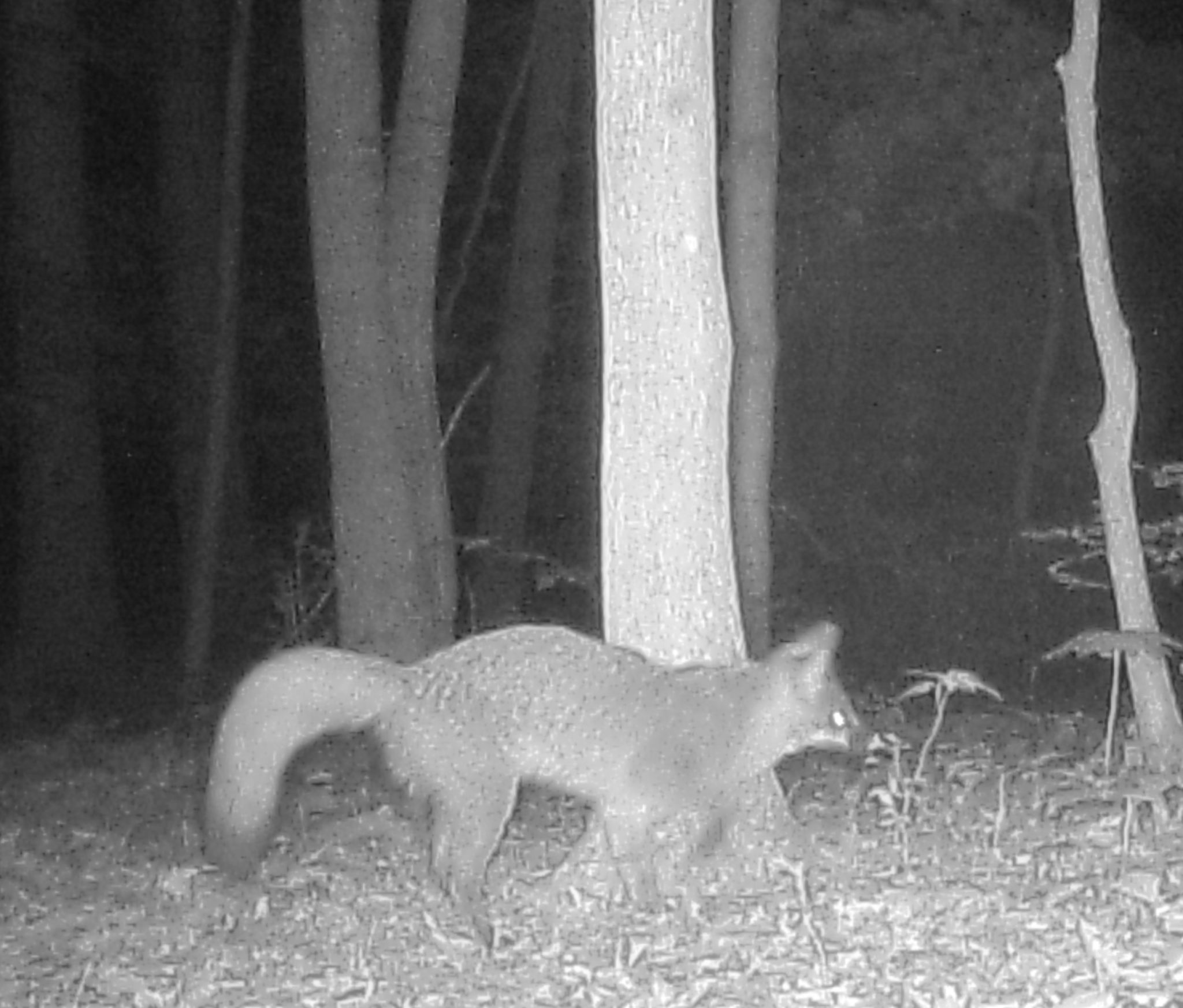
A Gray Fox captured on our trail cameras. Photo Credit: Wayne National Forest
In terms of the upcoming prescribed fire, Dake and Stewart recommended that Wayne National Forest staff try not to burn immediately following a rain event, since salamanders are very active after a heavy rain and a burn conducted during that time might affect their migrations. The team also suggested that burns should be avoided after late April, which marks the start of the salamander migration season. Further, in terms of birds and box turtles, Dake and Stewart propose that intermittent tracks of land should be preserved to protect the area for the next breeding season.
Biological Sciences Interns Make Recommendations for Baileys Success
Abbey Didier and Nathan Jedlinsky, who comprised a second Biological Sciences intern team, were assigned to the Baileys Trail System. Preparations and survey work for the trail are divided into five phases, two of which last summer’s interns completed. This left Didier and Jedlinsky with a formidable task—surveying 57 miles over the course of their 200-hour internship.
They surveyed and searched for rocky outcrops, wildlife openings, vernal pools, and possible bat roosts, in addition to wells and brick structures. In this process they encountered species they’d never seen in the wild before—including two black widow spiders. They also set up cameras to determine whether animals such as bobcats, black bears, and red foxes were present.
“The purpose is to understand what species are present so that land managers can better weigh the choices and then determine if and when plans need to be altered,” Reed notes.
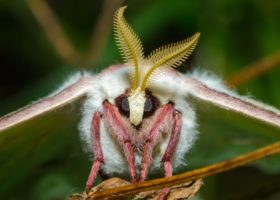
Photo Credit: Wayne National Forest – Ohio University Wildlife Intern Kyle Brooks
The team also set blue vane traps, located in six sites with significant floral growth, to capture bumblebees. Like Dake and Stewart, Didier and Jedlinsky worked with OHIO’s Biological Sciences faculty to learn how to pin insects. “That was a whole new experience for us,” Jedlinsky said, “and we were able to donate a box of bees to the department.”
For the interns, one of the highlights of their experience with the Wayne National Forest was the increased knowledge they gained of the area’s flora and fauna.
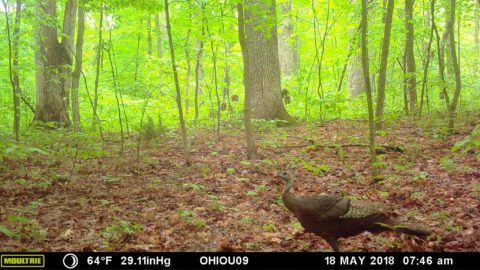
Eastern Wild Turkey. Photo Credit: Wayne National Forest
“I learned to identify so many species of trees, as well as different fungi and lichens. This internship was great, and I loved being at work and hiking through the forest,” Didier says.
Jedlinksy echoes Didier’s sentiments, touting the internship’s unparalleled opportunity of putting students in the forest for hands-on work.
“I learned about a lot of new species I’ve never seen in southeastern Ohio. Based on this internship, I’d like to research other aspects of the Forest Service and biological sciences to broaden my horizons. I also learned how to map out surveys and sites via GIS, which is a huge advantage for my résumé,” he remarks.
In the course of their surveying, Didier and Jedlinsky found four vernal pools and one wetland site, in addition to ponds and swamps. Together, the interns proposed that these areas warranted a redirection of the Bailey’s Trail System. They suggested two alternative routes that would allow the conservation of the sites they’d found.

Photo Credit: Wayne National Forest – Ohio University Wildlife Intern Kyle Brooks
“The immediate results of the findings relate to the proposed locations of the trail on the landscape as originally defined in the environmental documents. These locations were field-verified by the interns. This means that they specifically looked for species and/or habitat conditions within and adjacent to the trail locations that we would want to avoid or protect,” Reed explains.
Reed takes into consideration the information the interns provide to make determinations about projects on the Athens Ranger District.
“Based on their findings and recommendations from our specialists, I make the determination on whether or not to move the proposed trail location or incorporate additional mitigation measures to ensure the necessary protections are in place,” he states.
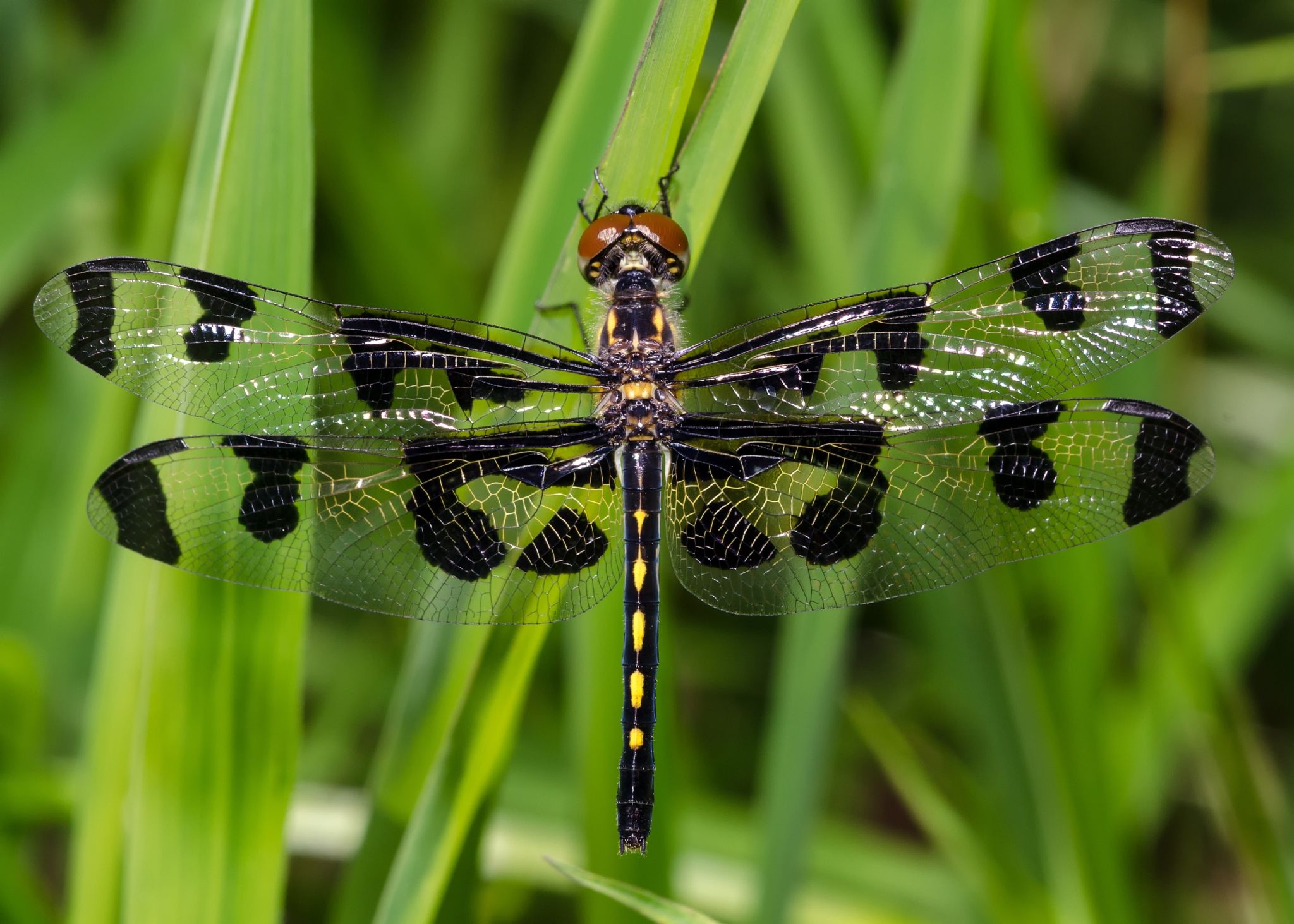
Photo Credit: Wayne National Forest – Ohio University Wildlife Intern Kyle Brooks
Dr. Dawn McCarthy, OHIO alum (’08) and the Partnership and Community Engagement Specialist for the Wayne National Forest, also praised the students’ work and noted the importance of their findings.
“We at the Wayne National Forest are definitely taking your recommendations and putting the trail in the right place,” she states.
Praise for a Successful Partnership
Jon Kazmierski, Acting Forest Supervisor, attended the interns’ presentations and praised the hard work that went into this successful partnership between Ohio University and the Wayne National Forest, which he described as “outstanding.” He addressed the interns and praised their diligence and dedication to the Forest Service.
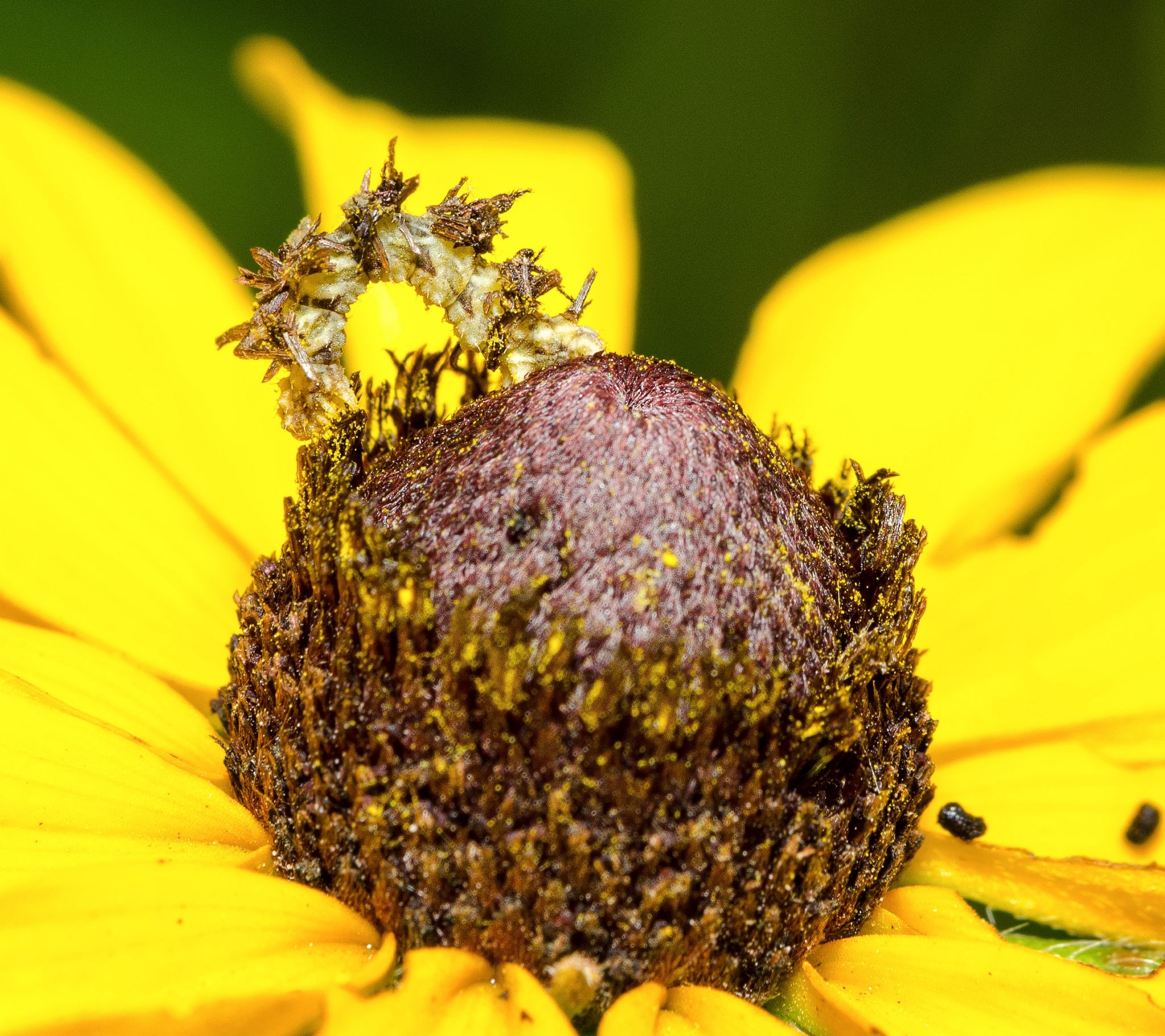
Photo Credit: Wayne National Forest – Ohio University Wildlife Intern Kyle Brooks
“I am really impressed, and I learned a lot listening to you all,” Kazmierski exclaimed. “Shared stewardship is increasingly important in national forests across the country, and you’re already implementing that idea of working together. So much of what we do is about getting more people involved in the management of national forests, and you interns are astute in your observations about cooperation. I appreciate the hard work you put into your surveying, and I hope you continue to have an interest in working in Forest Service. There are so many job opportunities available in this field.”
A Final Note from Ranger Jason Reed
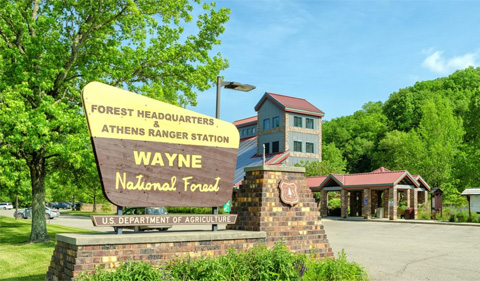
Photo Credit: Kyle Brooks
“The role of national forests across this country are to help provide a sustainable supply of wood products, clean water to many metropolitan areas, a home to a vast make-up of plant and animal species, and a backdrop to an almost endless assortment of recreational pursuits. All of this leads to a large demand on finite space where it often appears one use dominates another. I think the relationships we have with partners and stakeholders, as well as those still developing, are allowing us to showcase is possible when collaboration becomes the norm. The relevancy of public land needs to continue to be at the forefront of our economic, health, and social discussions in this area.”



















Comments